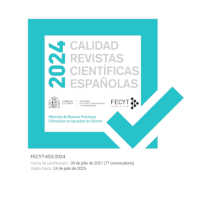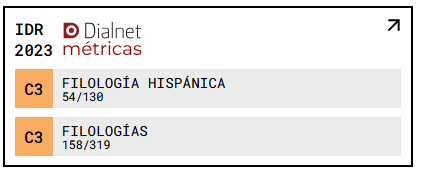“Nothing makes so fine a show as your Greek”: a foreword to Poe’s philhellenism in “How to Write a Blackwood Article” and “A Predicament”
DOI:
https://doi.org/10.18172/cif.3599Keywords:
Poe, A Predicament, Blackwoods, Greek, Hellenic literatureAbstract
Poe’s “How to Write a Blackwood Article” and “The Scythe of Time” have both drawn the attention of a number of scholars due to their undeniable connection and their satirical tone. Studies such as those of Daniel Hoffman and Kenneth Silverman have made note of Poe’s satire which features allusions to foreign literatures. In fact, Poe does not hesitate to quote from several foreign authors in the text and he admits it right away. However, even though one can come across studies such as those of Gustav Gruener, Carl F. Schreiber, and Susan Levine all dealing with the German and Spanish influence in Poe, one may not encounter research that explores the Hellenic aspect of the matter systematically. This paper focuses on the importance of Hellenic language and literature for Poe’s literary devices, and it also offers additional links between “A Predicament” and Hellenic mythology that have perhaps been overlooked by relevant research so far.
Downloads
References
AMPER, S. (1992). “Untold story: The lying narrator in ‘The Black Cat’”. Studies in Short Fiction 29 (4): 475-85.
CAMPBELL, K. (1933). “Three Notes on Poe”. American Literature 4 (4): 385-88. DOI: https://doi.org/10.2307/2919625
DAUGHRITY, K. L. (1930). “Notes: Poe and Blackwoods”. American Literature 2 (3): 289-92.
DISCH, T. (2000). The Dreams Our Stuff Is Made Of: How Science Fiction Conquered the World. New York: Touchstone.
DORO, L. (1944). “Aion”. Hesperia 13 (4): 274. DOI: https://doi.org/10.2307/146699
DROST, C. (2006). Illuminating Poe: The Reflection of Edgar Allan Poe’s Pictorialism in the Illustrations for the Tales of the Grotesque and Arabesque. University of Hamburg: UMI.
GOODMAN, M. (2008). The Sun and The Moon: The Remarkable True Account of Hoaxers, Showmen, Dueling Journalists, and Lunar Man-Bats in Nineteenth-Century New York. New York: Basic Books.
GRUENER, G. (1904). “Poe’s Knowledge of German”. Modern Philology 2 (1): 125. DOI: https://doi.org/10.1086/386631
HANTIU, E. (2010). “Humor and Satire in Edgar Allan Poe’s Absurd Stories”. Edgar Allan Poe Review 11 (2): 28-35. DOI: https://doi.org/10.2307/41506410
HOFFMAN, D. (1972). Poe Poe Poe Poe Poe Poe Poe. New York: Doubleday & Company Inc.
IMPELLUSO, L. (2008). Myths: Tales of the Greek and Roman Gods. New York: Abrams.
KENNEDY, G. J. (Ed.) (2001). A Historical Guide to Edgar Allan Poe. New York: Oxford UP. DOI: https://doi.org/10.1093/oso/9780195121490.001.0001
LEVINE, S. and LEVINE, S. (1986). “‘How-to’ Satire: Cervantes, Marryat, Poe”. Modern Language Studies 16 (3): 15-26. DOI: https://doi.org/10.2307/3194883
MCELRATH, J. R. (1970). “Poe’s Conscious Prose Technique”. NEMLA Newsletter 2 (2): 38-43.
MEYERS, J. (2000). Edgar Allan Poe: His Life and Legacy. New York: Cooper Square.
POE, E. A. (1978). The Collected Works of Edgar Allan Poe, vol. II. (Ed. Thomas Ollive Mabbott). Cambridge: The Belknap Press of Harvard University Press.
POE, E. A. (1838). “‘The Psyche Zenobia” and “The Scythe of Time’”. American Museum 1 (3): 301-17. <http://www.eapoe.org/works/tales/blkwda.htm>
POLLIN, B. (2001). “Poe’s Greek: A Short Prolegomenon to a Long Inquiry.” Edgar Allan Poe Review 2 (2): 71-77.
SANIDOPOULOS, J. (2014). “Edgar Allan Poe As A Philhellene.” Honey and Hemlock. . (Accessed 28 Mar. 2017).
SCHREIDER, C. F. (1930). “Mr. Poe at his Conjurations Again.” The Colophon 2 (1): 1-11.
SILVERMAN, K. (1992). Edgar A. Poe. A Biography. Mournful and Never-Ending Remembrance. London: Weidenfeld & Nicolson.
SOMMERFELD, S. (2012). “Post-Kantian Sublimity and Mediacy in Poe’s ‘Blackwood’ Tales.” The Edgar Allan Poe Review 13 (2): 33-49. DOI: https://doi.org/10.2307/41717104
THOMAS, R. D. and DAVID, K. J. (1987). “Chapter 03” in The Poe Log. Boston: G.K. Hall & Co.
TRIEBER, M. J. (1971). “The Scornful Grin: A Study of Poesque Humor”. Poe Studies: History, Theory, Interpretation 4 (2): 32. DOI: https://doi.org/10.1111/j.1754-6095.1971.tb00169.x
TSAMIS, C. (2009). “ΠΕΡΙ ΧΡΟΝΟΥ [REGARDING TIME]”. Πανελλήνιο Σχολικό Δίκτυο, European Union. <http://users.sch.gr/xtsamis/OkosmosMas/Xronos.htm>. (Accessed 15 October 2016).
VAN DER HORST, P. W. (1999). “Aion” in Dictionary of Deities and Demons in the Bible. Eds. Pieter W. Van Der Horst and Bob Becking. Brill: Eerdmans Publishing Company.
Downloads
Published
How to Cite
Issue
Section
License
The authors retain copyright of articles and authorize CIF the first publication. They are free to share and redistribute the article without obtaining permission from the publisher as long as they give appropriate credit to the editor and the journal.
Self-archiving is allowed too. In fact, it is recommendable to deposit a PDF version of the paper in academic and/or institutional repositories.
It is recommended to include the DOI number.
This journal is licensed under a Creative Commons Attribution 4.0 International License














